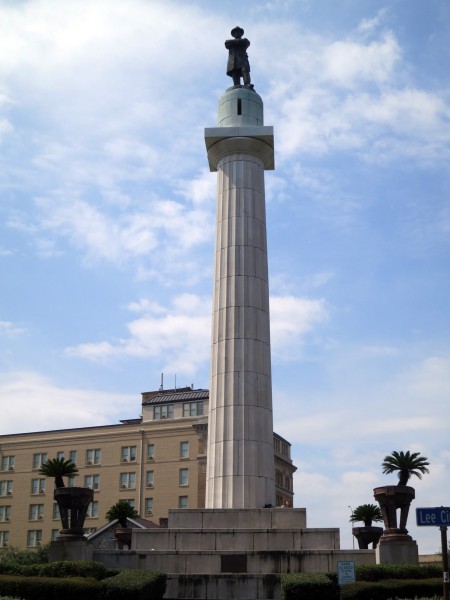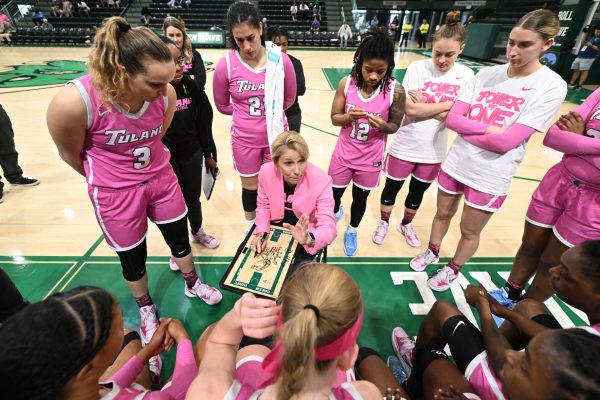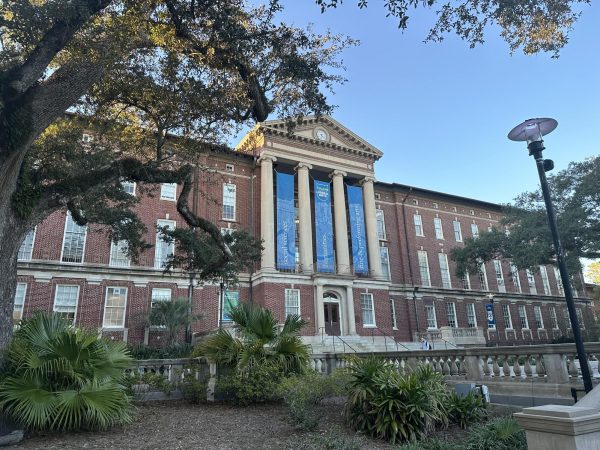Court rules New Orleans can remove confederate statues

The monument of Confederate leader Robert E. Lee will be taken down following a ruling from a federal appeals court.
New Orleans is scattered with civic references to its days as a city in the Confederate States of America. Some of the most prominent statues include Confederate General Robert E. Lee at Lee Circle, Confederate General P.G.T. Beauregard at City Park and Confederate President Jefferson Davis’ monument on Canal Street.
Opponents of the Confederate monuments have been working to get the monuments removed. New Orleans Mayor Mitch Landrieu and the New Orleans City Council support the movement, and earlier this month, a federal appeals court approved the city’s plan to alter the monuments.
Four local groups — Monumental Task Committee, Louisiana Landmarks Society, Foundation for Historical Louisiana and Beauregard Camp No. 130 — supported keeping the monuments to safeguard the city’s history. These groups believe the court’s ruling poses a threat to the historical preservation of New Orleans.
“Despite this setback, the non-profit organizations that filed the original suit will continue to argue that all the City’s historic monuments and cultural sites should be preserved and protected … ,” a joint statement from the organizations said.
The statement added that a better response would be to include plaques on the statues that explain the role of the memorialized individuals played in the context of their time, including both sides of this history.
Many Tulane students are involved in Take ‘Em Down NOLA, a group which calls for the city’s immediate action in removing all symbols of white supremacy in New Orleans.
“The New Orleans family is defined by the diverse and inclusive nature of its culture in spaces both public and private,” the group’s website says. “Public spaces are for all of the public and should not be used to promote the abhorrent views of the white ruling class to uphold symbols of Black oppression.”
While the appeals court ruling applies to the Lee, Beauregard and Davis statues, many New Orleans residents and advocates are most concerned about the Lee statue because Lee Circle is a famous staple of the city.
History professor Robert Blakeslee Gilpin recently spoke at an event about uncovering the racial legacy of New Orleans and Tulane. He believes that the monuments in question represent oppression and should not be preserved.
“The reason that [the Lee] statue was put up was to send a message to the white people that they were in charge of the black and that they should stay where they are,” Gilpin said.
Gilpin said he would like to see the monument in a museum and on its side, a position that might take away some of its political and cultural power. Gilpin also expressed some ideas to consider in order to replace the monuments, should they be removed.
“Imagine something that was about what New Orleans was actually about in Lee Circle,” Gilpin said. “… Something that was reflecting the horrible stain of slavery on this city and on the state but also what an instrumental role it played in creating them … It would be a totally different civic space.”
The city is now accepting proposals from companies on how to remove the monuments without damaging them so that they can be stored in a city warehouse until decisions are made regarding what to do with them in the future.
Leave a Comment
Your donation will support the student journalists of Tulane University. Your contribution will allow us to purchase equipment and cover our annual website hosting costs.
















Paul • Apr 1, 2017 at 12:29 pm
Joe from Detroit’s erudition and eloquence is an apt reflection of the mindset and tenuous grasp of reality of those who would devote time and resources to honor those who spilled the blood of 850,000 men in an effort to continue the enslavement of others. Lee, Beauregard, and Davis were not ignorant “products of their time.” Scores of people who were “products” of that same time knew evil where they saw it. So too did these Southern “heros.” We should be no more willing to place a statue of Hitler in our parks than to allow these monstrous Civil War figures to be accorded a place of honor in our cities. Shameful.
Joe smith • Mar 19, 2017 at 7:34 pm
Fuck the haters and liberals that want to take down historic monuments and historic symbols of America. If the confederate monuments be taken down then so should the union monuments also should be taken down as well because slavery was under the american flag decades longer than it was under the confederate flag. If you don’t like the american south then get the fuck out of the south and move
To the north if you don’t like the south and it’s patriotic symbols. I live in detroit michigan and I look at the confederate monuments and symbols as patriotic americana and I don’t think it is right for all of these flags and monuments to be taken down and abolished. Why is it now all of a sudden all confederate monuments and symbols are being abolished? We never had a problem with them before obama became president. Why all of a sudden are they a problem now?